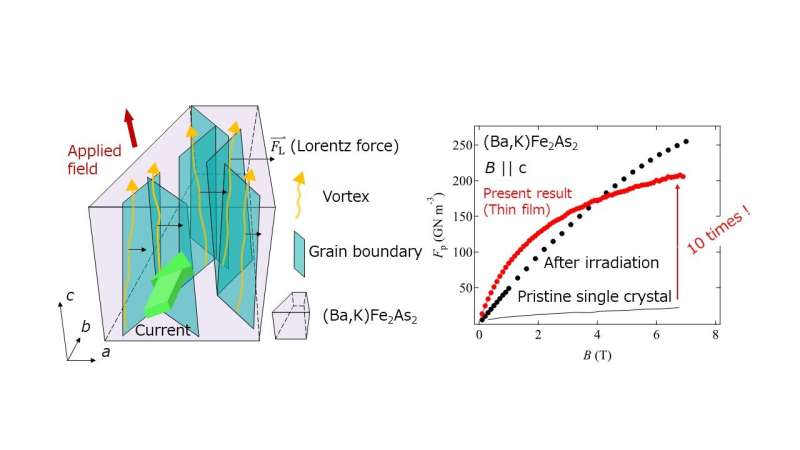Phys.org December 17, 2021
The technique of ion irradiation to enhance the dissipation-free supercurrent in the presence of a magnetic field for type II superconductors is complicated and expensive. An international team of researchers (Japan, USA – Florida State University) has developed an inexpensive, scalable way to produce high-temperature superconductors using grain boundary engineering techniques. They grew iron-based superconductors (FBS) called “potassium-doped BaFe2As2 (Ba122) using molecular beam epitaxy, in which the superconductor is grown on a substrate. It had high pinning efficiency without artificial pinning centers (APCs). Measurements of the thin film’s electrical resistivity and magnetic properties showed that the thin films had a surprisingly high critical current and strong pinning efficiency in the material. The in-field properties obtained in the study are comparable to that of ion-irradiated K-doped Ba122. Grain boundary engineering is a simple technique and can be scaled up for industrial applications. The new method could help develop stronger, inexpensive, and high operating temperature superconductors. The findings of this study could accelerate the development of strong magnets using superconductors, leading to advances in magnetic resonance imaging (MRI)…read more. Open Access TECHNICAL ARTICLE

Schematic illustration of how vortices are pinned by low-angle grain boundaries in a (Ba,K)Fe2As2 superconductor… Credit: NPG Asia Materials volume 13, Article number: 68 (2021)